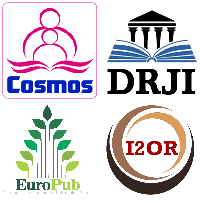Connecting the Strategies of Therapeutic Drama: The Irresistible Response of Students in the University of Ghana
Abstract
Drama Therapy has been introduced as a novel course of study in Applied Theatre at the Theatre Arts Department, University of Ghana, Legon. Under Applied Theatre at the University of Ghana, two main courses are taught: Drama in Education and Theatre for Development. Recently, however, a third course, Drama Therapy has been added. The enthusiasm with which students have embraced the course is overwhelming. The students have indeed demonstrated over the past four years that, with assured opportunities, they can achieve a lot. A comprehensive mentorship program with additional strategies will help them work on themselves, and with various groups to achieve their self-worth while they are still in school. This paper highlights how Drama Therapy continues to help develop students’ capacities. In this study, drama as therapy and other components of the expressive arts have been explored to teach, heal, empower and rejuvenate students at the University of Ghana. Drama therapy as a developmental model places increasing demand on participants to demonstrate great spontaneity, flexibility, intuition and interactive capabilities in the creative processes to achieve healing and development. These creative approaches have been expressed vividly through improvisation, story-telling, mime and visual art in this research. In this case, the arts and healing are seen as manifesting two harmonizing positions and when they unite with intent, they do not compete against one another; they rather join forces to achieve greater heights in diverse development fields.
References
Hargo, A. (2012). Creating Identity: The Deaf, Dance and Sensory Games. Journal of School of Performing Arts, 4(3).
Jennings, S. (1995). Drama therapy with Children and Adolescents. Embodiment Projection Role (EPR). Home Rowan Sue Resource Play and Stories EPR contact.
Rogers, N. (1993). Creative Connections; Expressive Arts as Healing. Palo Alto, California: Science & Behavior Books, Inc.
Roth, E., & Barrett, R. (1982). Parallels in Art and Play with a Disturbed Retarded Child. The Arts in Psychotherapy, 7, 19-26.
Rubin, A. J. (1987). Approaches to Art Therapy: Theory and Technique. New York: Brunner/ Mazel Publishers.
Wilber, K. (2001). No Boundary; Eastern and Western Approaches to Personal Growth. Boston: Shambhala Publications Inc.
Copyright (c) 2025 Tabitha Harriet Deh, Aaron Yeboah Annan

This work is licensed under a Creative Commons Attribution 4.0 International License.


 ISSN
ISSN 











